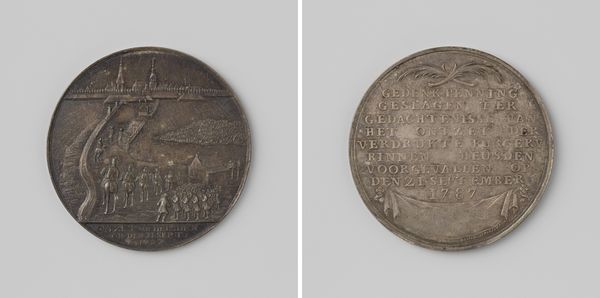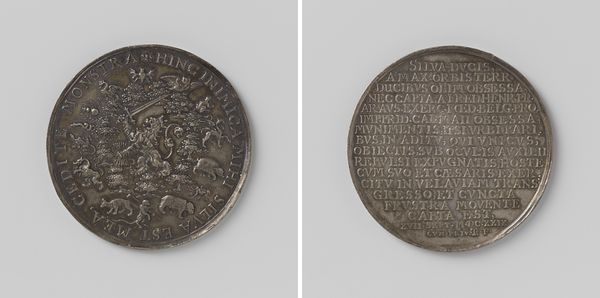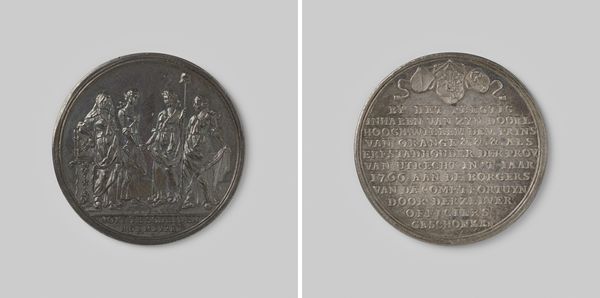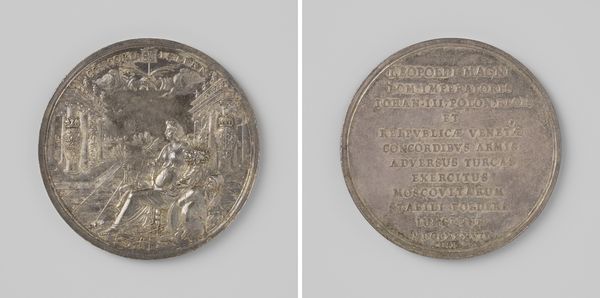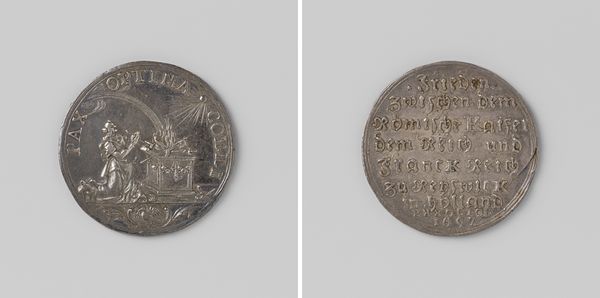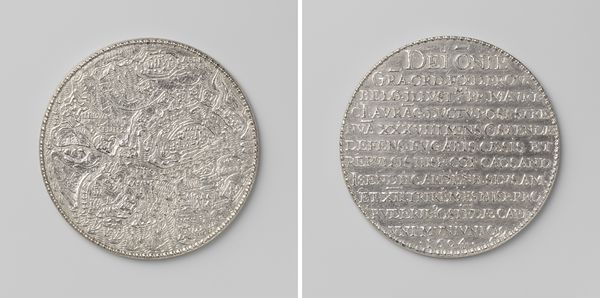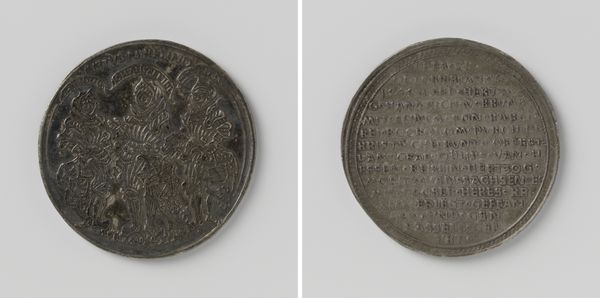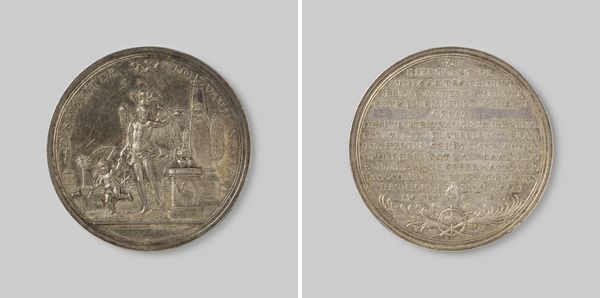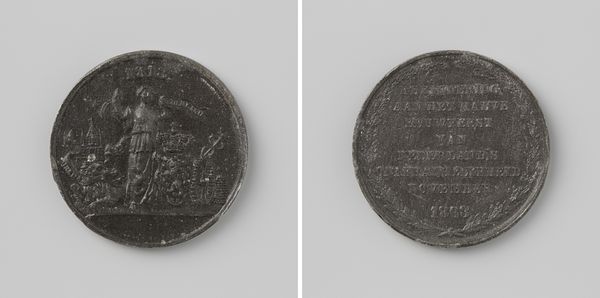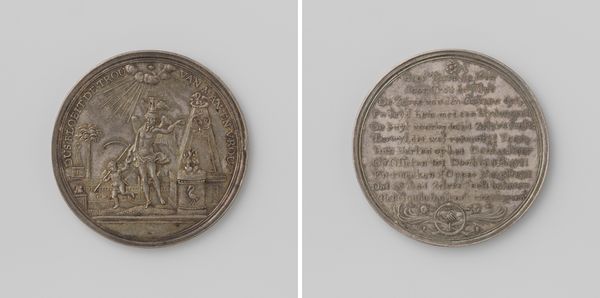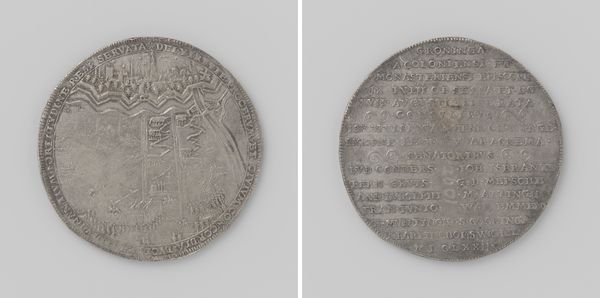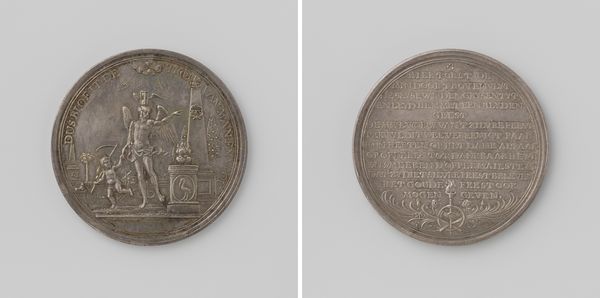
print, metal, engraving
#
baroque
# print
#
metal
#
landscape
#
history-painting
#
engraving
Dimensions: diameter 6.3 cm, weight 672 gr
Copyright: Rijks Museum: Open Domain
Curator: Before us we have a commemorative medal by Johannes Looff, produced in 1639. It's an engraving on metal, depicting "Slag bij Duins" or, the Battle of the Downs. Editor: The immediate impression is one of dynamic chaos rendered in miniature. The sheer density of detail, the tightly packed ships, it’s almost overwhelming for the eye. Curator: The artwork serves as a visual document of a pivotal moment in the Eighty Years' War, framing it as a decisive victory for the Dutch Republic against the Spanish fleet. It becomes more than just an artwork, it is propaganda meant to reinforce a rising sense of Dutch national identity. Editor: Absolutely, the formal elements contribute to that message. The engraver’s control is stunning, especially when you look at the wave patterns; how the forms are stylized but so expressive. I note that this contributes to an almost symbolic representation of naval power. Curator: Considering that context is key. Beyond the aesthetic, consider who had access to such an object? Medals like this were circulated among the elites to promote specific political viewpoints and affirm allegiances. It helped to solidify popular sentiment towards the Dutch cause. Editor: While appreciating the historical weight, it's hard not to admire the balance achieved within that circular format. See how all these lines, perspectives, create a vibrant scene that is contained, self-referential almost? Curator: And we mustn’t disregard what a battle at sea really meant. Looking at these materials from our contemporary standpoint we have to address slavery, racism and power. We should challenge its status as a celebration of military prowess, looking deeper at the exploitation and violence involved. Editor: Your analysis adds much to it. Seeing it this way adds such complex levels of meaning, highlighting the engraving’s intricate play of light and shadow and prompting to rethink that Baroque movement isn't merely decorative or illustrative, but often politically laden. Curator: It really urges us to examine the intersection between artistic representation and historical realities, in our ongoing understanding of conflicts old and new.
Comments
No comments
Be the first to comment and join the conversation on the ultimate creative platform.
